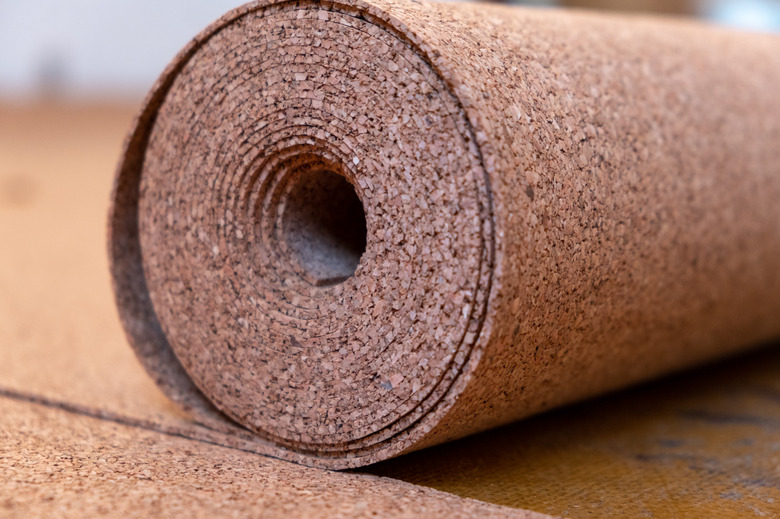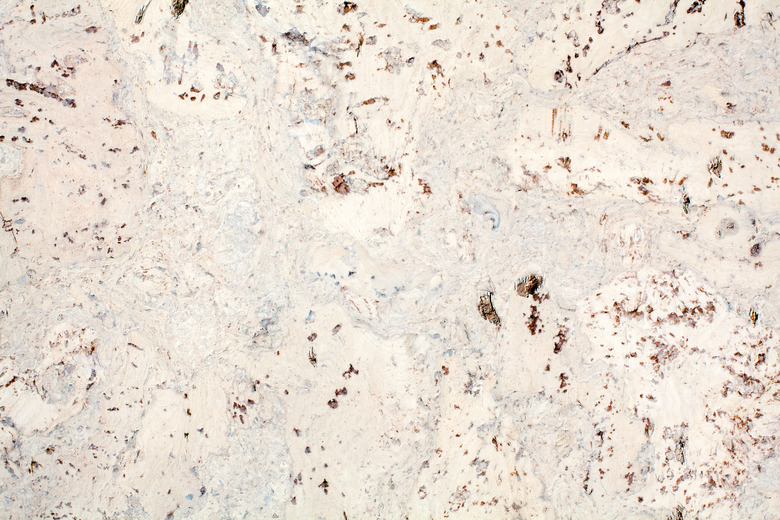Cork Flooring: What You Need To Know
Cork serves as an excellent flooring option for any room where comfort, durability and appearance are equally important. This natural material offers an appearance similar to wood or laminate flooring, yet it has a much greater ability to insulate against both noise and cold air. Cork floors are sold as glue-in-place tiles or floating floors. The condition of the existing floor surface helps dictate which option is best for a new cork floor installation in the room.
Cork: Made from Tree Bark
Cork: Made from Tree Bark
Cork used for flooring comes from the bark of the cork oak tree (Quercus suber). Prominent in southern Europe, this oak is unique in that its bark regenerates itself after some of it has been harvested. The bark is also sustainably harvested under stringent government regulations to ensure the health of the trees.
Once harvested, the bark is chipped into fine pieces, mixed with a binding agent, then baked in sheet form in a kiln. In many cases, the cured cork flooring is cut into tiles. Some flooring manufacturers use byproducts from the wine cork industry, rather than freshly harvested cork oak bark, resulting in an industry with very little waste product.
Cork flooring used for engineered floating floors has three layers: kiln-fired cork as the bottom layer, fiberboard as the middle layer, and a cork veneer as the top layer. The veneer comes straight off the bark of the tree, shaved into thin layers.
Cork Flooring Benefits
Cork Flooring Benefits
Cork's natural traits make it a bit unique in the flooring world, offering a combination of benefits that no other single type of flooring can match.
- Cork is comfortable underfoot, giving a little as you walk or stand atop it. This also means glassware dropped on it is slightly less likely to break than if dropped on a wood or tile floor. Its porosity also means that cork absorbs sound quite well—exactly the opposite of wood or laminate floors, which can be quite loud. It is also a great insulator, thanks to this same porous structure.
- Cork is hypoallergenic, largely because it does not absorb dust. It is also antimicrobial and resistant to mold and mildew. This makes cork an excellent option for those with asthma or allergies.
- Cork resists moisture. A natural moisture resistance, thanks to a substance called suberin, is one of the reasons cork has been used for bottle stoppers for centuries. This same moisture resistance makes for easy cleanup when it comes to spills, especially when compared to carpeting. However, the moisture resistance can be affected by the sealer used on a cork tile floor. Gaps between tiles may allow moisture to seep in.
- Cork lasts for decades. With proper care, a cork floor can last 40 years or more, making it a much better option than vinyl, for instance. Some of Frank Lloyd Wright's buildings from a century ago still have their original cork floors. Check the warranty offered from several cork flooring manufacturers: Some offer generous 25-year warranties.
- Cork is fairly affordable at about $3 to $8 per square foot—comparable to hardwood and carpeting prices.
The Disadvantages of Cork Flooring
The Disadvantages of Cork Flooring
While cork floors offer a considerable number of benefits compared to other flooring materials, there are a few potential drawbacks.
- Cork floors fade. Regular exposure to direct sunlight may cause one area of the floor to get lighter than the rest. This happens in areas where curtains are left open during the brightest parts of the day and beams of sunlight shine onto the floor. To help combat this problem, consider keeping the curtains closed or place an area rug over the area most exposed to bright sunlight.
- Dents happen. A cork floor gives under pressure, as will a cork drink coaster or bulletin board. Cork floors may not be the best option for a room with heavy furniture or appliances, as you'll probably notice dents if you ever move these pieces. If you choose cork for the room anyway, consider placing furniture coasters under furniture legs, or strips of wood beneath heavy appliances such as the refrigerator. Over time, dents usually fill themselves back in, at least partially, as cork's cell structure has a memory.
- Cork will stain. While cork resists moisture, pigments from wine, for instance, may cause stains. Cork may not be the best option for a kitchen or any room where spills occur, such as a dining room for a family with young children. Wipe up spills and splatters right away to prevent permanent discoloration. Proper sealing can help prevent stains.
- Scratches happen. Although cork generally resists abrasions, small items such as pebbles tracked in from outdoors may scratch or scrape the floor if dragged beneath a heavy object. A knife dropped may also damage the flooring if the blade lands in the cork. If you have pets that claw at the floor, cork may not be a good option.
- Cork requires acclimation. Like many wood and laminate flooring options, some cork floor materials require acclimation before installation. In some cases, you will need to leave the cork in the project room for up to three days before installation. Cork tiles may even change shape slightly during acclimation, so they may not be completely square afterwards. The most common aberration is tiles shrinking inwards slightly at the corners.
Cork Installation Considerations
Cork Installation Considerations
The best type of cork flooring for any given room depends upon the existing floor surface. Glue-down cork tiles require a completely smooth subfloor to prevent flaws such as indentations and bumps from showing through.The surface also must be completely clean; otherwise, the adhesive may not stick properly.
A floating cork floor, on the other hand, is much more forgiving, allowing you to set the floor atop old wood or vinyl that isn't in the best shape. A floating cork floor expands a bit more than a glue-down cork tile floor. And floating cork floors can also be used over radiant heat—though only if it heats the surface to 82 degrees F. or less. (Exact temperature recommendation may vary by manufacturer.)
Either type of cork flooring may be used in a bathroom, although an extra coat of polyurethane is recommended to help prevent moisture issues.
Post-Installation Cork Floor Care
Post-Installation Cork Floor Care
As for cleaning, treat the floor as a hardwood floor, sweeping it or vacuuming it with a hard-surface vacuum cleaner on a daily basis. Wash it weekly with a few drops of dish soap in a bucket of water. Dip a mop into the water and wring out most of the moisture. Wipe the floor down with a soft cloth afterwards to help prevent moisture from seeping through seams.
Follow the flooring manufacturer's recommendations for sealers, as the floor needs to be resealed every few years. Some manufacturers recommend wax, while others recommend coats of polyurethane.




